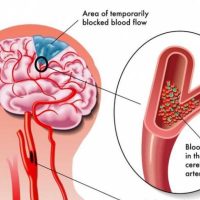 Osteoporosis may not roll off the tongue easily, but globally, one in three women and one in five men over the age of 50 will contract it in their lifetime. A disease that literally means “porous bone,” it strikes silently, builds slowly, and the first symptom often is the bone’s fracturing.
Osteoporosis may not roll off the tongue easily, but globally, one in three women and one in five men over the age of 50 will contract it in their lifetime. A disease that literally means “porous bone,” it strikes silently, builds slowly, and the first symptom often is the bone’s fracturing.
In Indonesia, where statistics vary slightly from those worldwide, it is estimated that nearly 28% of men and more than 32% of women already have been diagnosed with the affliction, thus hitting more than 63 million of the country’s estimated 239 million population. Because most live far from cities and half of the diagnostic machines are in Jakarta, the figure is believed to be higher, because so many haven’t been tested.
As World Osteoporosis Day approaches, October 20, it’s a good time to consider how the risks can be recognized, with or without diagnosis, and consequently delayed or minimized.
The Facts
Our bones are living tissue and constantly changing. They are their most dense in our early 20s and as we age we shed old and gain new cells. For people with osteoporosis, bone loss outpaces the growth of new bone. The most common fractures occur at the hip, spine and wrist.
Of particular concern are vertebral (spinal) and hip fractures. Vertebral fractures can have serious consequences including loss of height, intense back pain and deformity—sometimes called Dowager’s Hump, causing the sufferer to walk bent over at the waist. A hip fracture often requires surgery and may result in loss of mobility and, infrequently, death.
The good news is that osteoporosis is now a largely treatable condition and with a combination of lifestyle changes and recommended medical treatment, many factures can be avoided.
And it’s never too soon to begin. Good habits established during childhood are the best prevention. Including sufficient calcium in the diet is essential. It’s estimated a 10% increase of peak bone mass in children, much of this the result of good lifestyle choices, reduces the risk of an osteoporotic fracture during adult life by 50%.
Who’s At Risk? What to Do
Risk factors range widely—from age, gender and ethnicity to lifestyle choices such as smoking, alcohol intake and diet. More specific signs include family history of osteoporosis, eating disorders, frequent falls, and the presence of rheumatoid arthritis.
To counter this risk, adults should:
- Ensure a nutritious diet and adequate calcium intake
- Avoid under-nutrition, particularly the effects of severe weight-loss diets and eating disorders
- Maintain an adequate supply of Vitamin D
- Participate in regular physical exercise, including weight-bearing activity
- Avoid smoking and second-hand smoking
- Avoid heavy drinking
What You Can Do Today
You can take a one-minute risk test, get a patient brochure, read patient stories, and find access to a calcium calculator at: http://www.worldosteoporosisday.org
You can also seek furher information from the Indonesian Osteoporosis Society : http://www.iofbonehealth.org/iof-national-societies/1226











